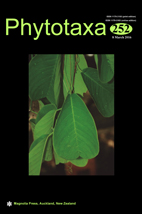Abstract
Agaricus endoxanthus is one of the few species of Agaricus, which are broadly distributed across several continents. This typically tropical species has also been introduced and reported from European tropical greenhouses. To better circumscribe this taxon and understand its distribution, we investigated its intraspecific variability. Sixteen collections resembling A. endoxanthus from various regions were selected for morphological examination and sequencing. Through a combined morphological and molecular approach, nine specimens were identified as A. endoxanthus. No major morphological differences were detected among the studied specimens, however their ITS sequence data were highly variable. The presence of numerous heteromorphisms and the allelic distribution at certain pairs of loci indicate that hybridization and recombination have likely occurred throughout the history of certain samples. Based on the genetic distance and phylogenetic analyses, the observed high genetic diversity appeared unlinked to the geographic origin of the samples, possibly due to intercontinental trade. The seven remaining collections resembling A. endoxanthus were identified as A. moelleri, A. punjabensis, a phylogenetically close relative of A. endoxanthus introduced from Pakistan, A. volvatulus and a closely related species. The detailed description of A. volvatulus is given with data obtained from the type specimen and three African collections.

